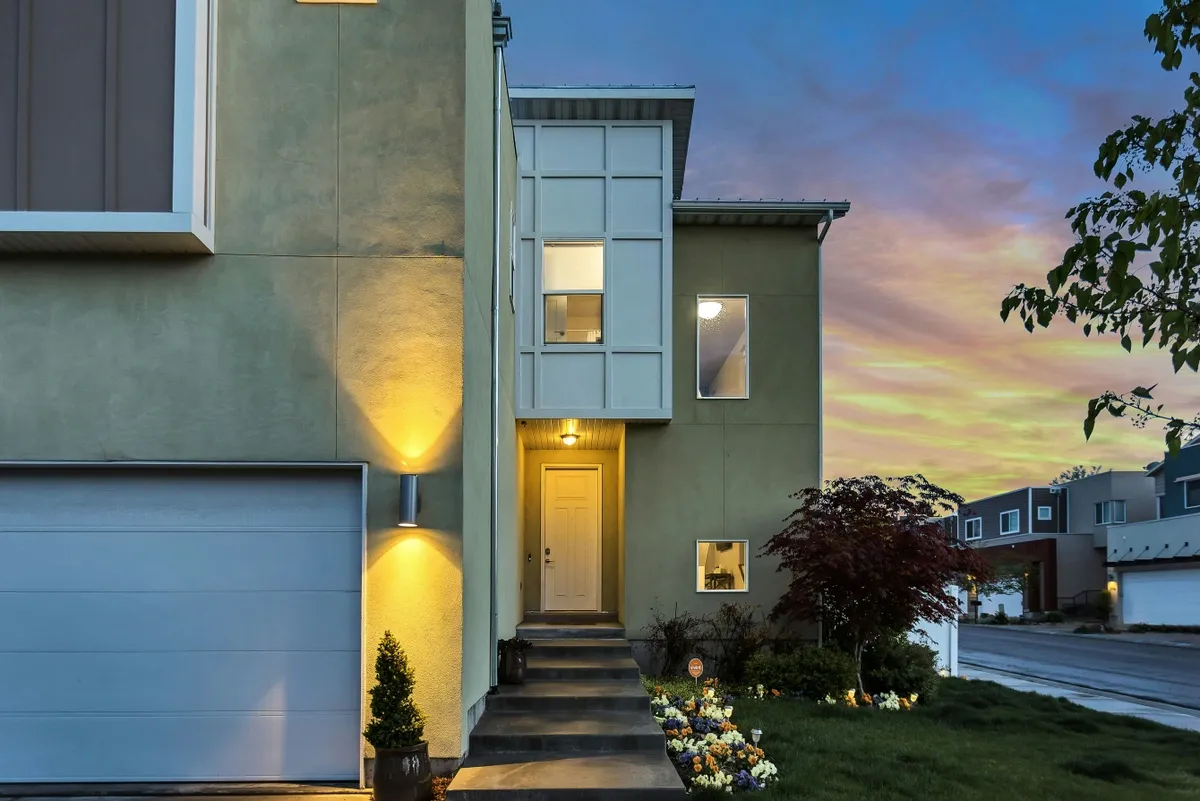
Modular architecture is revolutionizing the construction industry by offering innovative solutions to some of the most pressing challenges faced by architecture firms today. From reducing construction costs and time to enhancing sustainability and design flexibility, the latest trends in modular architecture are paving the way for more efficient and environmentally conscious building practices. By embracing these advancements, architecture firms can significantly improve their project outcomes, ensuring high-quality, scalable, and safer constructions.
Current Trends in Modular Architecture
Modular architecture is redefining how we approach building design and construction. This design principle breaks down a structure into smaller, interchangeable modules, enabling diverse configurations and easier modifications. The concept has evolved significantly since its early applications by the Romans, who used prefabricated sections for quick assembly of forts. Today, modular design is characterized by its precision, cost-effectiveness, and flexibility, accounting for more than 6% of new constructions in the United States (source).
Several emerging trends are shaping the future of modular architecture:
- Building Information Modeling (BIM): This technology aids in planning, developing, and constructing detailed models, enhancing collaboration and efficiency (source).
- Market Growth in Asia-Pacific: The region is experiencing rapid expansion in modular construction, driven by urbanization and the need for quick, affordable housing (source).
- Technological Innovations: Integrating advanced technologies like robotics, which can cut production costs by 30%, expedite delivery by 50%, and reduce waste by up to 70% (source).
- Adaptability: Modular designs are increasingly used in challenging locations, from urban centers to remote areas, without compromising on quality.
- Luxury Features: Modern modular designs are incorporating high-end finishes and amenities, making them attractive for various markets (source).
Technological advancements are a major driving force behind these trends. Digital design tools like BIM software, Computer Numerical Control (CNC) machining, and robotic fabrication techniques allow for the automated production of complex building elements with high precision. The use of sustainable materials such as engineered wood and 3D-printed concrete further enhances the environmental benefits of modular construction (source).
Several notable projects exemplify the success of modular architecture:
- Nakagin Capsule Tower in Japan showcases compact living spaces stacked to form a unique building.
- Modskool in Delhi, India, uses local materials for quick construction, ideal for areas prone to demolition.
- Makoko Floating School in Nigeria addresses flooding issues with a buoyant design.
- Nest Toolkit offers affordable prefabricated housing units in Los Angeles.
- Tetris Apartments in Slovenia apply modular design to residential buildings (source).
These trends and projects illustrate the transformative potential of modular architecture, offering architecture firms innovative pathways to enhance efficiency, sustainability, and design flexibility.
Benefits of Modular Architecture
Modular architecture offers numerous advantages that are making it an increasingly attractive approach for architectural firms. Here are some of the key benefits:
Cost Efficiency and Reduction of Construction Time
One of the most significant benefits of modular construction is its cost efficiency. Projects utilizing modular methods can be completed 30-50% faster than traditional construction methods, leading to substantial savings on labor costs and project management expenses. This expedited timeline is due to the streamlined manufacturing and assembly process inherent in modular construction (source). Additionally, modular construction can save up to 25% on total project costs by minimizing labor and material waste (source).
Sustainability and Environmental Benefits
Modular construction is recognized for its environmental benefits. It reduces waste, maximizes material utilization, and follows a more sustainable and efficient approach. Excess materials from modular projects are often recycled or reused for future projects, significantly reducing waste. Furthermore, modular buildings can be disassembled, and modules can be relocated or refurbished for new use, which decreases the demand for raw materials and minimizes energy expenditure (source, source).
Flexibility and Scalability in Design and Construction
Modular architecture provides exceptional flexibility and scalability. Buildings designed with modular methods can be disassembled, and the modules can be repurposed or reused for different applications. This adaptability offers long-term cost savings by allowing the same structure to serve multiple purposes over its lifespan. Modular design also facilitates the easy addition or removal of features without extensive reconstruction, making scaling much easier and faster than traditional methods (source, source).
Enhanced Quality Control and Safety Measures
Quality control is another area where modular construction excels. In a controlled factory environment, each building component undergoes rigorous checks by experts, ensuring high standards of quality. This controlled setting significantly reduces the chances of on-site errors and weather-related complications, leading to superior end products. Moreover, permanent modular construction enhances this process by offering faster speed to occupancy, cost predictability, and a lower environmental impact, contributing to overall efficiency and quality (source).
While the benefits of modular construction are substantial, it’s essential to consider project-specific factors such as design complexity, site location, and customization requirements. Careful evaluation of these factors is crucial when considering modular construction for a particular project.
Adopting Modular Practices in Architecture Firms
As the architecture industry increasingly embraces modular construction, firms must proactively integrate these practices to stay competitive and innovative. Here are essential steps and considerations for architecture firms looking to adopt modular practices.
Steps for Architecture Firms to Integrate Modular Practices
To successfully transition to modular construction, architecture firms should start by familiarizing themselves with the principles of Design for Manufacture and Assembly (DfMA). This approach is crucial for creating precise 3D and 4D models and developing detailed plans that predict structure performance (source). Additionally, understanding the higher levels of architectural definition and organizational discipline required for modular architecture is essential (source).
Tools and Software that Facilitate Modular Design and Project Management
Several software tools are specifically designed to support modular design and project management. Tools like Building Information Modeling (BIM) and Computer-Aided Design (CAD) are pivotal in creating detailed and accurate modular plans. Furthermore, rapid test-fit toolkits can help designers generate multiple configurations quickly and dynamically during the early design stages (source). These technologies enable seamless integration and coordination across teams, enhancing efficiency and precision.
Training and Skill Development for Architects and Construction Teams
Adopting modular practices also requires investing in training and skill development. Programs such as the “Structural Design of Prefab and Modular Building Construction” offered by the University of Melbourne provide essential knowledge and skills for architects and construction teams (source). These training sessions cover crucial aspects like structural design, planning for transportation, lifting, and handling, and maintaining structural facades.
Challenges and Solutions in the Adoption of Modular Architecture
The transition to modular architecture comes with its own set of challenges, including a lack of familiarity, higher upfront costs, and logistical complications (source). To address these issues:
- Invest in Training: Continuous education and training programs can bridge the knowledge gap and increase expertise in modular practices.
- Cost Management: Although initial costs may be higher, the long-term savings in labor and materials, along with the efficiency gains, can offset these expenses.
- Logistical Planning: Proper planning and coordination are essential to overcome logistical challenges. Leveraging advanced project management tools can streamline these processes.
While adopting modular practices can be challenging, using a time tracking and expense reporting solution like Minute7 can help architecture firms manage their projects more efficiently. The platform’s features, such as timesheets, expense tracking, and reporting, can be particularly beneficial for firms transitioning to modular architecture, ensuring that projects stay on time and within budget.
Embracing the Future with Modular Architecture
As the architecture industry continues to evolve, modular architecture stands out as a transformative approach that addresses many of the traditional challenges faced by architecture firms. By adopting modular practices, firms can achieve significant benefits in cost efficiency, sustainability, flexibility, and quality control. The streamlined processes and technological advancements that underpin modular construction make it an appealing option for firms looking to enhance their project outcomes and deliver innovative solutions to their clients.
Architecture firms that embrace modular practices are well-positioned to lead the industry into the future. However, the transition to modular construction requires careful planning, investment in training, and the adoption of advanced tools and software. By equipping their teams with the necessary skills and resources, firms can overcome the challenges associated with modular construction and capitalize on its numerous advantages.
Minute7 plays a crucial role in supporting architecture firms as they navigate this transition. With features like time tracking, expense reporting, and seamless integration with QuickBooks, Minute7 helps firms manage their projects more effectively. By ensuring that projects remain on schedule and within budget, Minute7 enables firms to focus on delivering high-quality, sustainable, and flexible modular designs.
In conclusion, the future of modular architecture is bright, offering exciting opportunities for architecture firms to innovate and excel. By adopting modular practices and leveraging solutions like Minute7, firms can enhance their operational efficiency and deliver exceptional results in an ever-changing industry.



